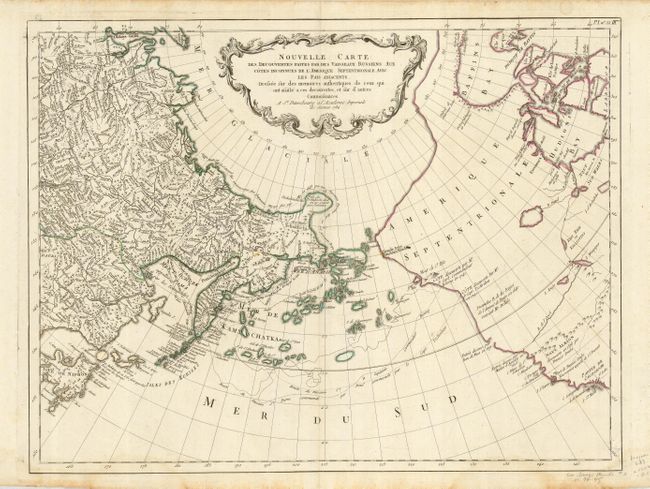

Samuel Dunn (1723 - January 1794) was a teacher of mathematics, navigation, and astronomy, an engraver, and a publisher active in London, England, during the second half of the 18th century. It is reasonably scarce and appears on the market infrequently. This fourth issue is as the third issue, but with Sayer's 1786 imprint in the lower margin. The plate was altered in 1783 to reflect the Treaty of Paris. A second issue was published in 1776 to in British wartime interest in maps of America. A variant was originally published under the imprint of Sayer and Bennett with the title A Map of the British Empire in North America. This map drawn by Samuel Dunn and engraved by Robert Sayer. Ultimately, French Canadian coureurs des bois would discover the westward river passage, but not until the early 19th century. This cartography, he believed, would eventually load to the Pacific. This he suggestively illustrates via a vast network of rivers extending from Lakes Superior, past the Lake of the Woods, as far as Lake Winnipeg, with additional unexplored rivers extending further west. Dunn here boldly rejects the notion, The North and South Tides meet below Marble Island and are always equal on the same days so that neither of them can come from the Pacific Ocean whose distance likewise of above 430 leagues, has long cry'd aloud that there is no Passage at least for Ships from Hudson Bay.He does, nonetheless, embrace the cartography of Carver, who believed he had discovered an inland river passage to the Pacific. In the late 18th century, it was long hoped that a passage might be still be found from the Hudson Bay leading westward to the Pacific and, thus, the rich markets of Asia. Expedition after expedition was launched into the Artic, discovering Hudson and Baffin Bay – but no route to the Pacific. The British, Americans, and French all realized the potential profit of a Northwest Passage. Some of these ambiguous boundaries would eventually lead to disputes between the states such as the Third Pennamite War (1774), fought over the Wyoming Valley and the northern boundary of Pennsylvania. Notably the coast to coast grants originally offered to North Carolina, South Carolina, and Georgia, are clearly rejected. The new states that would eventually emerge in this region, Tennessee, Kentucky, Illinois, Alabama, and Ohio, are as yet almost exclusively American Indian territories. The individual states themselves also exhibit ambiguous borders west of the Appalachian Mountains. It is noteworthy that all of Lake Michigan then, as now, falls within the United States. The Western border of the United States, in the vicinity of modern day Minnesota, is left unmarked while to the south and north borders with Spanish Louisiana and British Canada are clearly defined.

The cartographer, nonetheless, leaves a fair amount of ambiguity with regard to the borders. British mapmakers were slow to respond to the new geography, with the present map being one of the earliest British commercial maps to embrace the newly forged United States. Published shortly after the Treaty of Paris formally ended the American Revolutionary War, the British were forced to concede the existence of a large and powerful new country. This map reflects a changing British perspective on the United States. One of the Earliest British Maps to Name the United States Centered on the Great Lakes, it covers from Baffin Bay to Florida and the Gulf of Mexico, and from Lake Winnipeg to Greenland, the Atlantic seaboard, and the Grand Banks. This rare 1786 map of the United States by Samuel Dun and Robert Sayer is one of the earliest obtainable English maps to embrace the term 'United Sates.' The map was prepared by Samuel Dunn, a British mathematician, based upon earlier maps by Sayer and significantly updated by the explorations of Jonathan Carver. Minnesota - North Dakota - South Dakota.Massachusetts - Connecticut - Rhode Island.


 0 kommentar(er)
0 kommentar(er)
